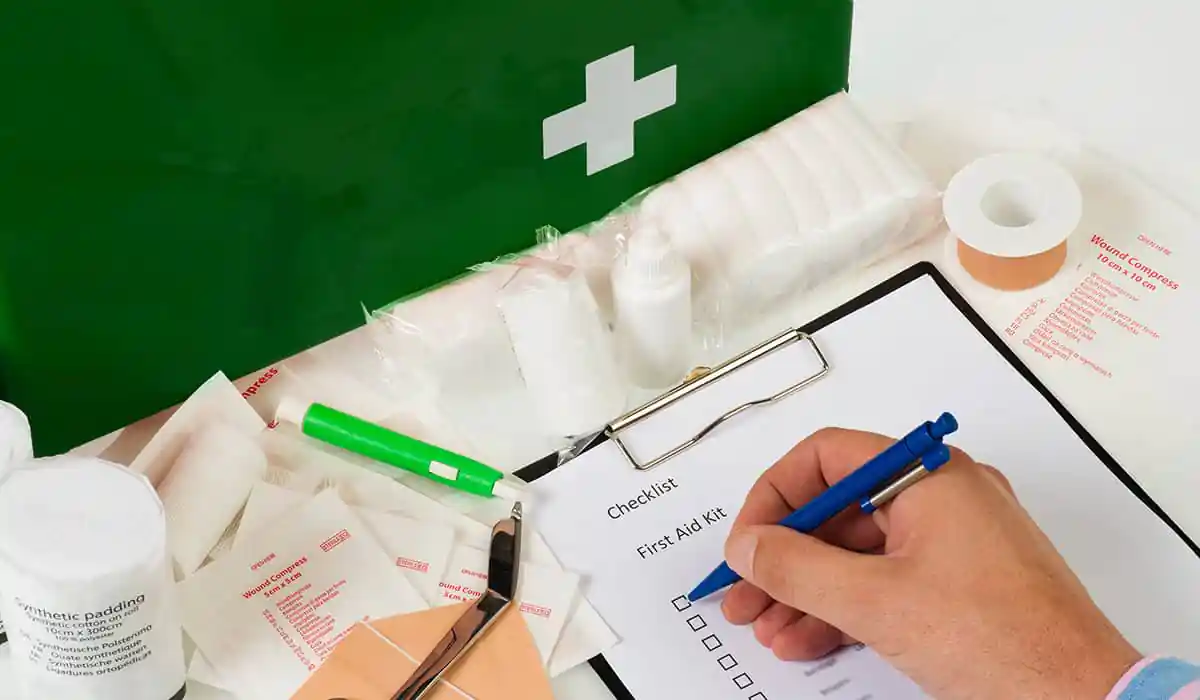The Essential Guide to Building a Well-Stocked First Aid Kit
Emergencies can happen at any time, and having a properly stocked first aid kit can make all the difference in saving lives. Whether you’re dealing with minor injuries or a critical situation, a comprehensive first aid kit should contain both basic supplies for everyday injuries and advanced tools for emergencies. Below is a categorized checklist to help you assemble the perfect kit.
Basic First Aid Kit Supplies: Everyday Essentials
These items should be included in every household and workplace, as they address minor injuries and everyday incidents.
- Adhesive Bandages: Various sizes to cover cuts, scrapes, and small wounds.
- Sterile Gauze Pads: Perfect for protecting larger wounds or burns.
- Medical Adhesive Tape: Keeps gauze or bandages securely in place without irritating the skin.
- Antiseptic Wipes or Solution: Essential for cleaning wounds and preventing infection.
- Scissors: Blunt-tipped scissors to safely cut bandages or clothing.
- Tweezers: Vital for removing splinters, ticks, or foreign debris.
- Disposable Gloves: Protect yourself and others from contamination when treating wounds.
- Thermometer: A digital thermometer for quickly checking body temperature.
- Face Mask: Protects both the injured person and the caregiver during treatment.
Intermediate First Aid Kit Supplies: For Moderate Injuries
These supplies are useful for treating more complex injuries and helping manage pain or discomfort.
- Burn Ointment or Aloe Vera Gel: Helps soothe burns and promotes healing.
- Elastic Bandages: Provide compression and support for sprains and strains.
- Triangular Bandages: Versatile for creating slings, immobilizing limbs, or using as a tourniquet.
- Pain Relievers: Paracetamol and ibuprofen are essential for pain relief and reducing inflammation.
- Antihistamines: Tablets or creams to manage allergic reactions or insect stings.
- Eye Wash Solution: Sterile saline solution to flush out foreign particles or chemicals from the eyes.
Advanced First Aid Kit Supplies: For Critical Emergencies
These items are crucial for addressing life-threatening situations and should be included in larger, more comprehensive first aid kits.
- CPR Face Shield or Mask: Essential for safe resuscitation, ensuring effective treatment without direct contact.
- Tourniquet: Used to control severe bleeding in limbs when direct pressure isn’t enough.
- Sterile Sutures or Wound Closure Strips: Useful for closing deep wounds until professional medical help is available.
- Splinting Material: Necessary for immobilizing fractures and preventing further injury.
- Emergency Blanket: Helps retain body heat and prevent hypothermia in situations of shock or exposure.
- First Aid Manual: Provides step-by-step instructions on how to treat a variety of injuries and conditions.
Why a First Aid Kit is Essential
A well-stocked first aid kit plays a critical role in emergency preparedness. Here’s why it’s so important:
- Immediate Access to Emergency Supplies: Accidents can occur without warning, and having a first aid kit ensures you can quickly address minor injuries like cuts, burns, or allergic reactions.
- Preventing Minor Injuries from Escalating: A small wound can become a serious issue if left untreated. Simple steps like applying antiseptic or a bandage can prevent infections and complications.
- Legal and Workplace Safety: In many countries, workplaces and public spaces are legally required to have a first aid kit. Beyond compliance, it’s an essential step in ensuring the safety of employees and visitors.
How to Organize Your First Aid Kit
Even if you have all the right supplies, they won’t be effective if they’re not organized properly. Follow these tips to ensure your kit is always ready to use:
- Categorize Your Supplies: Group similar items together. For instance, place all bandages in one section and medications in another.
- Label Everything: Store items in separate pouches or containers and label them clearly for easy identification.
Tips for Maintaining Your First Aid Kit
Your first aid kit is a living resource—it requires regular checks and replenishment to stay effective. Here’s how to keep it in top condition:
- Check Expiration Dates: Some medications and supplies can expire. Regularly inspect your kit and replace expired items.
- Replenish Used Items: After using any supplies, make sure to restock them right away. This ensures your kit is always prepared for the next emergency.
- Update Seasonal Needs: Adjust the contents of your kit based on the time of year. For example, add sunscreen during summer months and cold-weather gear during winter.
By ensuring your first aid kit is well-stocked, organized, and properly maintained, you can be confident that you’re ready to handle whatever emergencies come your way. Whether it’s a simple scrape or a more serious situation, the right supplies at the right time can make all the difference.



